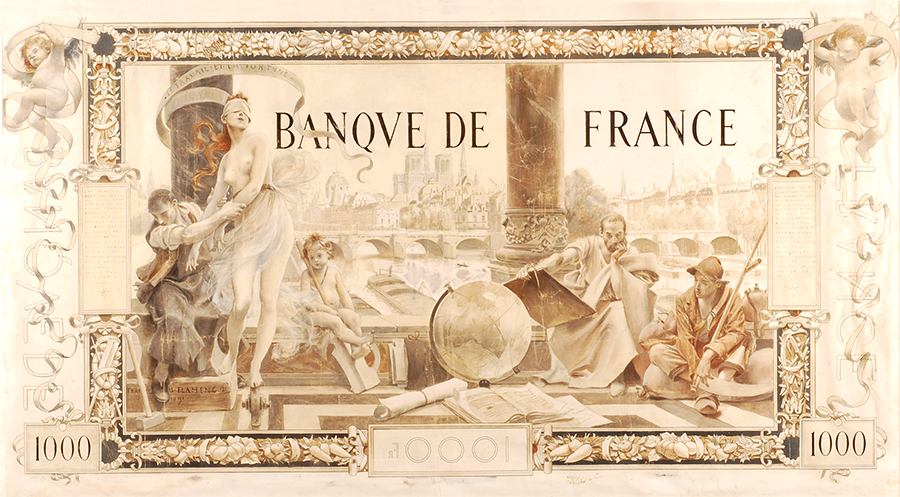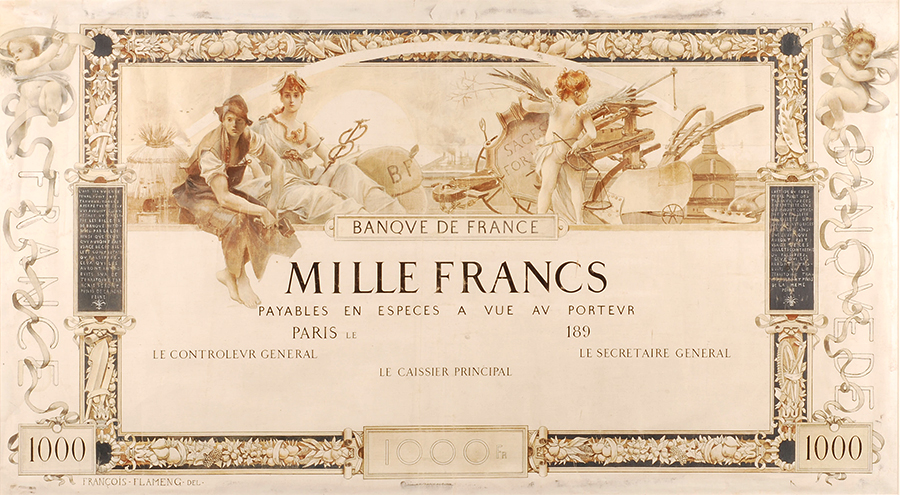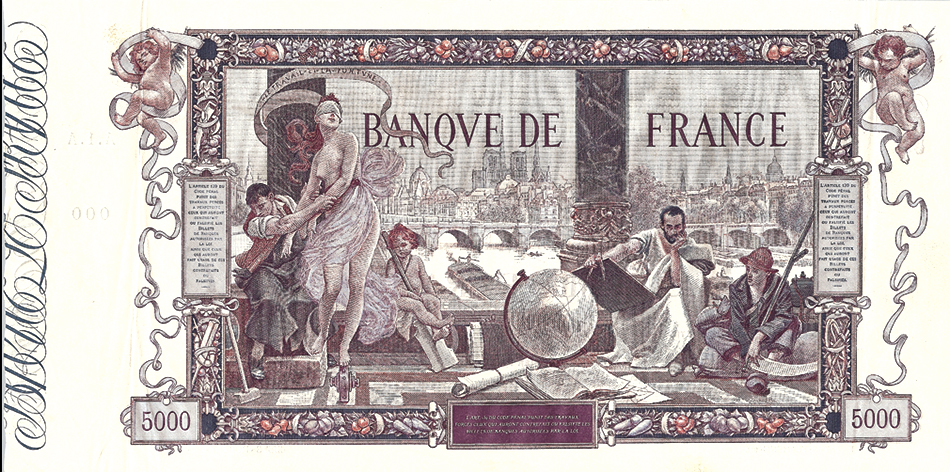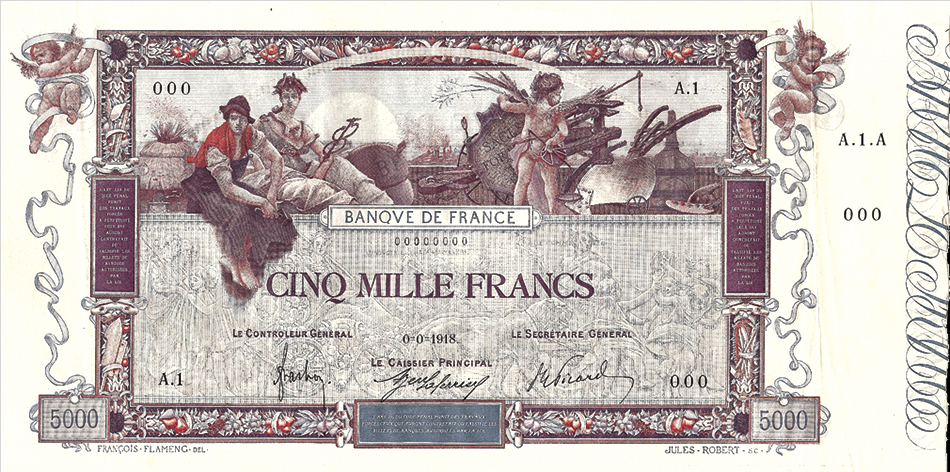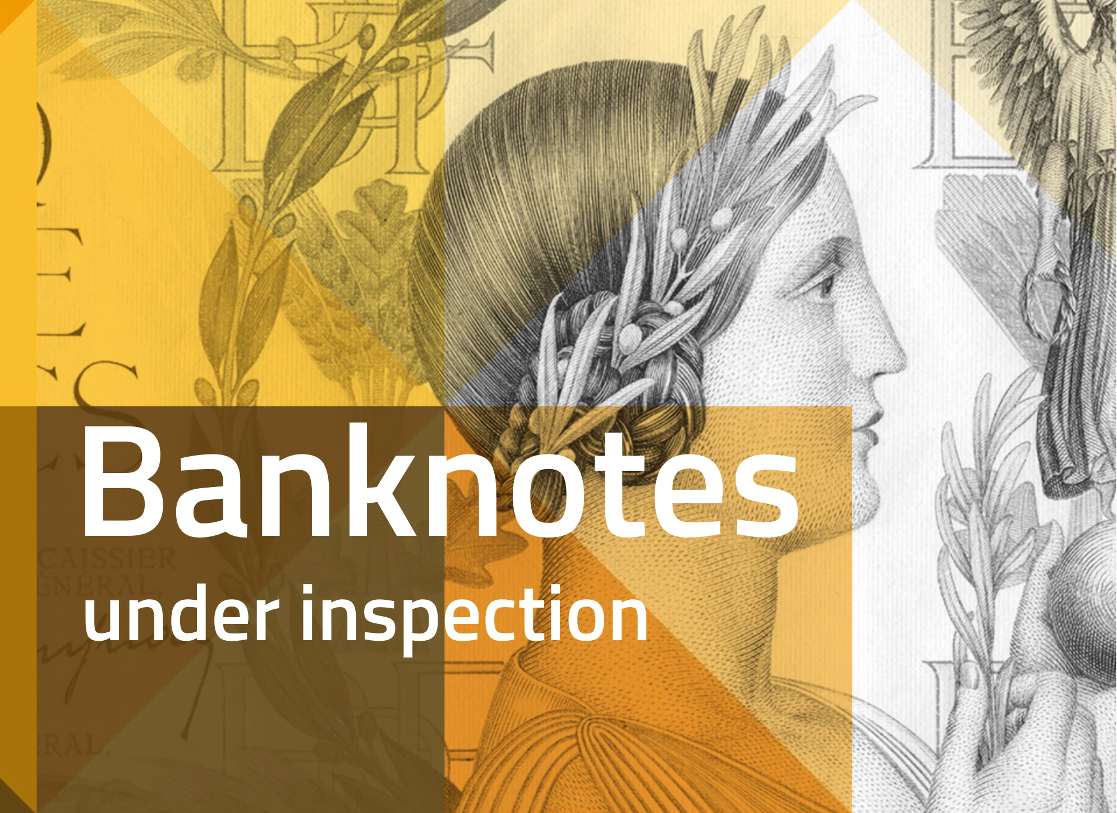The 5,000 franc Flameng is an emblematic note that stands out in Banque de France’s history. It is often regarded as France’s most beautiful banknote, both for its technical features and aesthetic design. However, its journey from manufacture to issuance was far from smooth.
The Flameng is France’s largest ever note, measuring 25.6 cm in length, and was designed by the artist François Flameng (1856-1923).
Renowned for his historical paintings and portraits, Flameng also produced frescoes and decorative panels for some of Paris’ most notable buildings, such as the Sorbonne, the Palais de Justice, the Opéra-Comique, and Le Train Bleu restaurant in the Gare de Lyon.
In 1891, Flameng sketched the designs for a 1,000 franc note which would be the first in France to be printed in four colours. It was manufactured in the final years of the 19th century, but was never put into circulation, and the entire stock of 1 million notes was destroyed a few decades later. The printing plates for the note were nonetheless kept in the Banque de France’s reserves, and would eventually be put to good use. When war broke out in 1914, the Bank decided it needed a high-denomination banknote and rushed out a new Flameng using the existing plates. This time, however, the note had a face value of 5,000 francs and was printed in different colours and using a double watermark. Despite the initial urgency, the note would only come into circulation 20 years later, in 1938, with the renewed rise in international tensions. It was subsequently withdrawn again in 1945, after only seven years in use.
Why the long delay?
First, the Banque de France had reservations about issuing a note with advanced security features. Low-value notes had none of these characteristics, and the Bank thought it might be accused of giving special treatment to the rich who were more likely to carry the new 5,000 franc note.
There were also concerns that the illustrations on the banknote were “too fanciful” and not sufficiently money-related. The Flameng had been designed during the Art Nouveau period of the late 19th century and was very elaborate in style, featuring a mixture of symbolism and realism.
The front left-hand side of the note shows an allegorical couple – representing the alliance between work and science – seated against a backdrop of smoking factories. On the right is a picture of Cupid standing next to a plough, holding a set of scales in his right hand and in the other a large shield emblazoned with the words Sagesse et Fortune (“Fortune and Wisdom”) – a reference to the Banque de France’s motto La sagesse fixe la fortune (“wisdom fixes fortune”). The lower half of the note is decorated with a bas-relief featuring representations of the sciences, arts, industry, agriculture and trade.
The reverse of the note is decorated with a single large tableau. On the left is an allegory of the saying Travail qui fixe la fortune (“work which fixes fortune”), showing a worker trying to hold back a blindfolded young woman who is balancing on the Wheel of Fortune. To their right stands Cupid holding a spade, and on the floor next to him are a globe, a parchment, an open book and a series of manuscripts. The right-hand side of the tableau shows a bearded man in philosopher’s clothes holding a compass and writing tablet, and seated next to him a young peasant leaning on his scythe. Paris’ Pont Neuf and Île de la Cité can be seen in the background.
The banknote thus combines France’s economic resources of the time with the worlds of letters, science and the arts, and with an emblematic representation of Paris.
Photos: Banknote, models, images: Banque de France collection
Published on 29 July 2015. Updated on 12 September 2019

